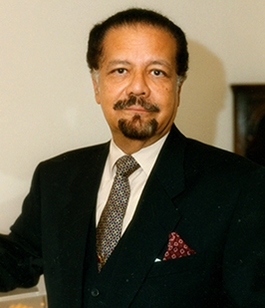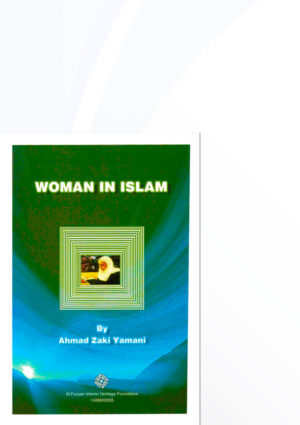Aḥmad Zaki Yamani

Muslim Women's participation in public life alongside men evidently acquired more vigour in the period that followed the Prophet's passing away, as also in the Umayyad period, and it continued to do so for a long time. However, after the fifth century of the Islamic era, Muslim society generally went into gradual decline, with differences of scale in different places. Nevertheless, a number of capable women played prominent roles despite the thick clouds of ignorance that gathered in some areas of the Muslim world.
We have already mentioned certain cases of participation by female companions of the Prophet in the military field, after he had passed away. This trend continued on a larger scale and to greater effect. In some major battles, such as al-Yarmūk and al-Qadisiyyah, the number of women taking part was in thousands. They undoubtedly played a major part in achieving victory. Asmaʾ bint Abi Bakr, for example, accompanied her husband, al-Zubayr ibn al-ʿAwwam, in the Battle of al-Yarmūk under the command of Khalid ibn al-Walid. She was engaged in actual fighting on horse back, and at the same time she was urging men on1.
Khawlah bint al-Azwar also took part in fighting at al-Yarmūk and in the conquest of Egypt. As she fought against the Byzantine army, she was wearing a mask that only showed her eyes. Khalid ibn al-Walid, the Muslim army commander was full of admiration of a masked fighter who killed enemy soldiers to the right and left, penetrating into the ranks of the Byzantines and then reappearing once more in the Muslim ranks. When after the battle the fighter took the mask off, everyone was amazed to discover that it was Khawlah, a woman, and they were full of praise for her bravery. 2
In the same battle, Umm Hakim was fighting alongside her husband, ʿIkrimah ibn Abi Jahl, who commanded a battalion defending a bridge to ensure that the Byzantine army would not use it to cross. ʿIkrimah was hit by an arrow and he died a martyr. The Byzantines realized that they had killed the Muslim commander and pressed on hard to cross the bridge, taking advantage of the resulting situation. It was Umm Hakim who rushed to the rescue together with a detachment composed of female companions of the Prophet. They fought hard against the Byzantines until they repelled their attack. In a gesture of honouring her, Khalid ibn al-Walid renamed the bridge after her. The bridge, in occupied Palestine, continues to bear her name today3.
Muslim women also played a different role in battles. For example, in the Battle of al-Yarmūk, the commander, Khalid ibn al-Walid, placed the women on a hill behind the lines with instructions to stop any retreating soldiers and urge them to re-join the battle. They used to hit any retreating soldier with pebbles and dust, shouting: “Are you, the soldiers of Islam, abandoning your mothers, sisters and children? Do you want to leave us to be taken by the infidel Byzantines?4 “ Thus, they were able to teach such retreating soldiers a lesson in bravery.
Hind bins ʿUtbah hit the face of her husband's horse as he was retreating under immense pressure by the Byzantines. Her husband, Abū Sufyan, was for several years the leader of the Quraysh in its battles against the Prophet. She said to him: “Where are you going, Abū Sufyan! Go back to fight sacrificing yourself so that you atone for your past action when you urged people to fight against God's messenger” Al-Zubayr ibn al-ʿAwwam says: “When I heard what Hind said to Abū Sufyan, I remembered the Battle of Uhud, as we were fighting with God's messenger.5 “
Historians mention that women were hard against deserting soldiers in that battle, and they wounded five of them and killed one, using tent poles. Al-Waqidi quotes Minhal al-Dusi, who fought in that battle, as saying: “Women were harder against us than the Byzantines.6 “
I believe that human history has not recorded any battle similar to the Battle of al-Ramlah, where a Muslim force composed of women only fought against an army made up of Byzantine men, which ended in a great victory for the Muslim women. The Byzantine commander in Egypt learnt that the Muslim army fighting in Egypt under ʿAmr ibn al-ʿAs had left its supplies and much of its armoury at al-Ramlah, guarded by a battalion of women. He immediately sailed with a large force, landed at the Palestine coast and headed for al-Ramlah, laying siege to the Muslim women's force at night. He thought that he would score an easy victory. He was not prepared for the great surprise he received when the Muslim women took up arms, went on the war cry and fought like tigers. It was a hard battle against the Muslim women who were heavily outnumbered in both manpower and equipment. But the Byzantines were forced to retreat, defeated and suffering heavy casualties, with many of their soldiers taken captive. In this battle Khawlah bint al-Azwar was injured and taken captive by the Byzantine army. However, ʿAmr ibn al-ʿAs was able to get her freed7.
Although military fighting is perhaps the most important endeavour that clearly shows women's ability in an area that is men's preserve, according to many people, it was by no means the only area in which women played a particularly important role. Muslim women proved their great ability in many other fields. There are countless number of cases to prove that, of which the following are but a few:
When the first complete copy of the Qur͗an was collated during Abū Bakr's reign, it was given to Ḥafsah, the Prophet's widow, for safe keeping. This single, complete copy of the Qur͗an remained with her throughout the reigns of Abū Bakr and ʿUmar.8 Needless to say, the Qur͗an is the most sacred book of Islam, embodying all its beliefs and laws.
Similarly, Muslim women participated fully in all types of political activity. ʿAʾishah, the Prophet's wife, led an army to declare her political views on the assassination of the third Caliph, ʿUthman ibn ʿAffan. Many were the women who spoke out in support of ʿAli ibn Abi Talib, the fourth Caliph, against Muʿawiyah ibn Abi Sufyan, his political opponent. History books provide numerous cases of their argument against Muʿawiyah when he finally took over as Caliph. Prominent among these were Sawdah bint ʿImarah ibn al-Ashtar, Bakkarah of the Hilal tribe, al-Zarqaʾ bint ʿAdiy ibn Ghalib of Hamadhan, ʿIkrishah bint al-Atrash ibn Rawahah, Darmayyah of al-Hajun, and Arwa bint al-Harith ibn ʿAbd al-Muttalib, all of whom engaged in individual debates with Muʿawiyah, demonstrating their courage and eloquence, as well as their assertive personalities and political prowess9.
Hind bint Zayd of the Ansar made of her home in Iraq a political club forum where those who were opposed to Muʿawiyah met for discussion and consultation. Hind was a very eloquent debater as mentioned by al-Tabari who describes her activity and her linguistic excellence10.
Prominent among early Muslim women who played an active and influential political role was Umm Kulthūm bint ʿAli ibn Abi Talib who accompanied her nephew, ʿAli ibn al-Husayn to Kufah in 61 AH. Her political speeches were extremely influential. Imam Hudhaym al-Asadi describes her as follows: “I have never seen a woman more eloquent than her... It is as if ʿAli himself is speaking. When she signalled to the people to be quiet, all speech came to a halt... When she later spoke, people were moved to tears. 11“
In the literary field, Muslim women scored great achievements. Sukaynah bint al-Husayn was a fine literary critic who admired fine poetry12. Her home was frequented by poets and literary figures. She also sat with leading figures from the Quraysh who lived in Madinah. In addition, she was fond of music.
Numerous are the female poets who are prominently mentioned in literary books. Distinguished among these were Walladah bint al-Mustakfi, ʿUlayyah bint al-Mahdi, Ḥamrah bint Ziyadah, ʿAʾishah al-Baʿuniyyah, and al-Khansaʾ. ʿAʾishah bint Talḥah ibn ʿUbaydillah was a literary figure famous for her eloquence and knowledge of Arab history. She received men in her home and never talked to them from behind a screen. When Anas ibn Malik told her that some people wanted to visit her, she said: 'You should have told me so that I could wear the best of my clothes. 13'
In Islamic studies, particularly Ḥadith, many women were famous for their achievements. Al-Dhahabi an outstanding authority on the status of Ḥadith transmitters says: “I do not know of any woman who was accused of false reporting of Ḥadiths or any who was judged as unreliable. 14“ To mention but a few of the main Ḥadith reporters among women we begin with Maymunah bint Saʿd, the Prophet's servant. Ibn al-Athir reports that ʿAli ibn Abi Talib learnt a number of Ḥadiths from her15. Al-Dhahabi reports that Abū Bakr al-Khatib al-Baghdadi read al-Bukhari's Saḥiḥ in Makkah under Karimah al-Marwaziyyah, who was an outstanding scholar of Ḥadith16. Ibn ʿAsakir is reported to have read Ḥadith under more than 80 women who were reliable transmitters.17 Similarly, the historian Muḥammad ibn Abi Shamah read al-Bukhari's Saḥiḥ under Umm al-Fadl Karimah bint ʿAbd al-Wahhab18. Fatimah bint ʿAbbas was a scholar of Fiqh, or Islamic law, and famous as a very pious teacher. She had great influence among women in Egypt and in Damascus.19 Al-Muzni's sister used to attend the circle of Imam al-Shafiʿi.20 In fact, the famous scholar al-Rafiʿi quotes her in his book on Zakat, or obligatory charity.
Nafisah bint al-Ḥasan ibn Zayd ibn al-Ḥasan ibn ʿAli ibn Abi Talib used to pray with al-Shafiʿi in Ramadan. She prayed the janazah, or funeral, prayer for him when he died. She asked for his coffin to be brought into her home.21 Fatimah bint ʿAbd al-Rahman al-Harraniyyah read the Ḥadith under her father, and her nephew was one of those who reported Ḥadiths from her.22 Lady Shuhdah, who was given the nickname Fakhr al-Nisaʾ, or Women's Pride, used to give lectures on literature in the main Baghdad mosque in the fifth century of the Islamic era (12th century CE). She also taught Islamic history, and her lectures were well attended by scholars. ʿAʾishah bint Aḥmad ibn Qadim of Muslim Spain or Andalucia was without peers in her knowledge and scholarship, and she excelled in writing copies of the Qurʾan.23 The Ḥanbali Fiqh scholar, Sitt al-Mulūk Fatimah bint ʿAli ibn al-Ḥusayn awarded some of her contemporary scholars with certificates of competence to read the Sunan ḥadith anthology by al-Darimi.24
In his book, Al-ʿIqd al-Thamin fi Tarikh al-Balad al-Amin, the historian Al-Makki al-Fasi devoted a chapter to the biographies of women under whom he studied. The chapter includes biographical notes on 250 lady scholars of repute, all of whom were either from Makkah or women who came to Makkah and lived there.25
ʿUmar ibn Fahd al-Hashimi al-Makki included in his book, Al-Durr al-Kamin Bidhayl Al-ʿiqd al-Thamin fi Tarikh al-Balad al-Amin, biographies of 286 lady scholars from Makkah who were qualified with certificates and who issued certificates to other scholars. Likewise, Shaykh Muḥammad ibn ʿAbdullah ibn Ḥumayd, the Ḥanbali Mufti of Makkah, wrote biographies of 37 lady Ḥanbali scholars, the most famous of whom was Fatimah bint Ḥamad al-Fudayli, otherwise known as al-Shaikhah al-Fudayliyyah. She belonged to al-Qaseem, and was born in al-Zubayr where she was educated before moving to Makkah. She later became one of its leading lady scholars. She wrote many books on a variety of subjects and had a magnificent library with reference books in all fields. Most Makkan scholars used to visit her to read to her or under her. She certified them and they certified her. She is buried in Makkah, may God bestow mercy on her. Her library was then moved to Madinah where it was lost, despite Shaykh Ibn Ḥumayd's efforts to retrieve it. He only managed to retain a small portion of it. He wrote a biography of her, mentioning that she died in 1247 AH, corresponding to 1831 CE.26
Ibraheem ibn Ḥammood al-Mushayqih, of the Islamic University of Imam Muḥammad ibn Saud, at al-Qaseem, published a book, Tarikh Umm al-Qura wa Makant al-Marʾah al-ʿIlmiyyah Fiha Min Khilal al-Durr al-Kamin li-Ibn Fahd, which is well appreciated. In it he explains the elevated standing of the lady scholars who achieved fame in Makkah. With their piety and advanced knowledge, they were like a minaret lighting the way for Makkan scholars in the ninth century of the Islamic calendar, 15th Century CE, long before Europe began to rid itself of the heritage of the dark ages.27
A detailed discussion of the role of Makkan women in education and the high positions they achieved is beyond the scope of this book. It merits devoting a separate book to it.
Islamic history has been greatly influenced by Muslim women who assumed high positions of government and administration. Prominent among these was Lady Lubna who was Head of the Caliph's Court during the reign of al-Hakam ibn ʿAbd al-Rahman al-Nasir. She wrote his letters to governors and other officials and was privy to all his secrets and conducted his affairs. She was famous for her knowledge that covered a wide area, was very articulate in her speech and even wrote poetry.28 Queen Arwa bint Aḥmad, widow of King al-Akram, ruled in Yemen for close to 40 years in the fifth century of the Islamic calendar, (12th century CE)29. Several academic theses document her scholarly, administrative and political achievements. Dayfah Khatun, Salah al-Din al-Ayyubi's, or Saladin's niece, succeeded her father to the throne of Aleppo in 634 AH (1247 CE), and ruled for six years30. Fatimah bint al-Ḥasan ibn Muḥammad ibn ʿAli was Queen in Sanaa and was able to annex Saadah and Najran.31
Safwat al-Din Badishah bint Qutb al-Din, the sixth monarch of the Tatfuliyyah dynasty, was the Queen of Kerman.32 Two women, Sikandar Begum and Shah Jehan, became Queens of India during the Islamic rule there.33 Empress Noor Jehan ruled North India in 1620. Her name was engraved on Indian money. She was famous as a firm, shrewd ruler who conducted the political and military affairs of her state well.34 In Indonesia, several women were rulers between 1641 and 1688, such as Safiyyat al-Din Taj al-ʿAlam, Naqiyyah Shah, ʿInayat Shah and Kamalat Shah.35 To conclude, a proper in-depth study of women's role in the times that followed the Prophet's period is a mammoth task. The examples we have seen present a true picture which should be enough to refute the argument of those who wish to keep women confined in their homes, deprived of the chance to fulfil the role God has assigned to them.
| Source note: This was published in: Woman in Islam_ English version, 2005, Al-Furqan Islamic Heritage Foundation, London, UK, p 39-52. Please note that some of the images used in this online version of this article might not be part of the published version of this article within the respective book. |


